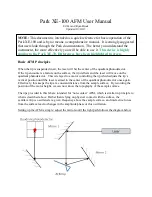
B270
Introduction
This manual will provide information pertaining to the setup and operation of the B270 biological compound microscope.
Please familiarize yourself with the necessary precautions and procedures prior to operating this instrument. Certain
features and specifications are subject to change.
v0.9.20220624
































